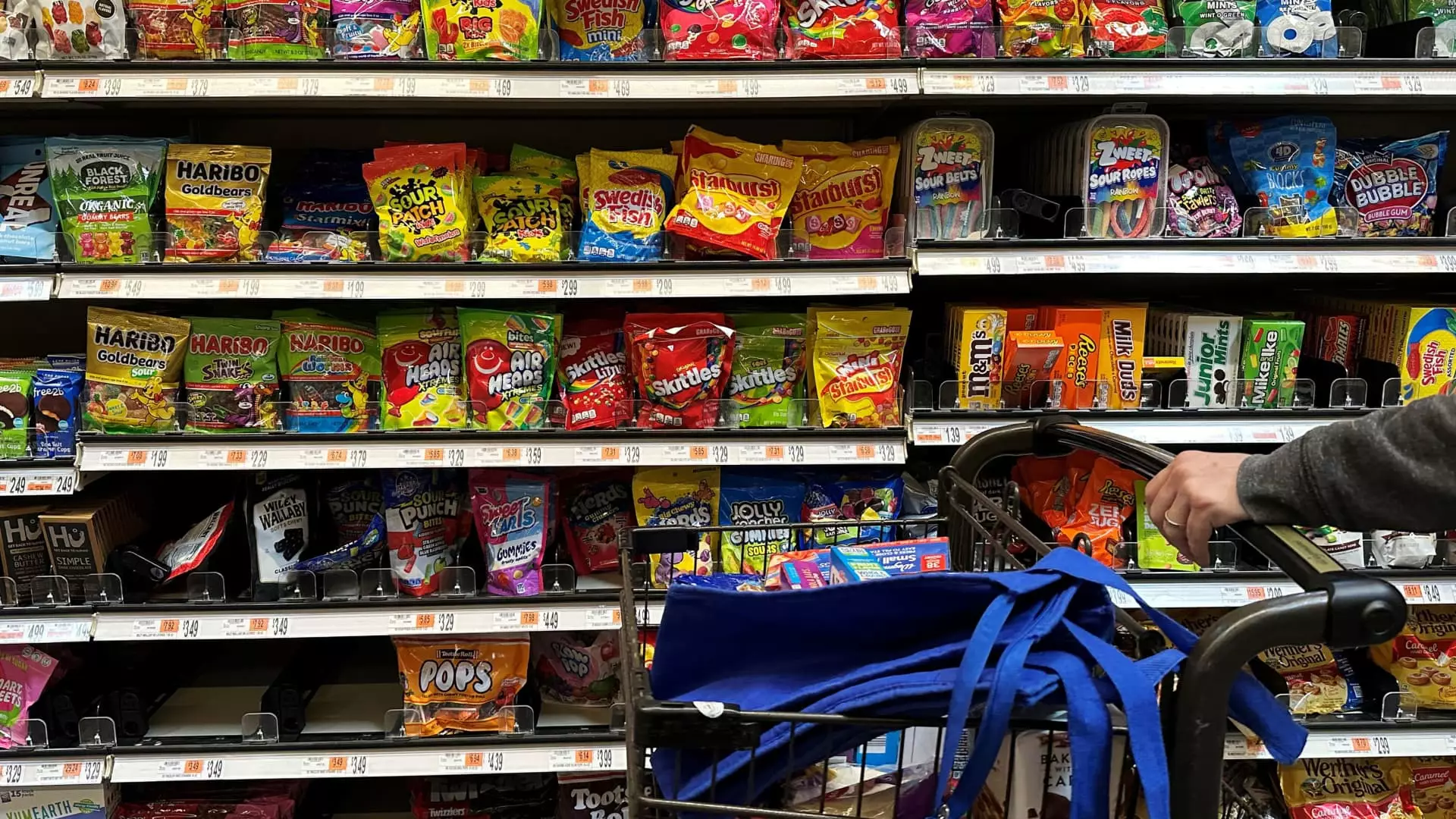In a groundbreaking move, the FDA has ignited a critical dialogue about the pervasive use of synthetic dyes in our food system. This initiative looms large as stunning revelations have emerged about the potential health hazards posed by these artificial colorants, often rooted in petroleum. The fluorescent hues of Flamin’ Hot Cheetos or the vibrant shades of Skittles have long masked an unsettling truth: for over half a century, American children have been exposed to a “toxic soup” of synthetic chemicals, as articulated by FDA Commissioner Marty Makary. This disclosure raises crucial questions about the food industry’s regard for consumer health versus profit margins.
With this shift, we witness a crossroads where health advocacy and corporate interests collide. Food and beverage giants like PepsiCo, General Mills, and Mars now stand before an urgent deadline to overhaul their product formulations. Yet, the skepticism among industry leaders, who claim insufficient evidence to warrant these changes, underscores a troubling inertia. Why wait for irrefutable proof when the health of millions—especially vulnerable children—is at stake?
The Gradual Cliff of Compliance
Despite the FDA’s commendable aspirations, the current premise relies heavily on “understanding,” not enforceable regulations. Health Secretary Robert F. Kennedy Jr. has yet to delineate concrete penalties for non-compliance. While Makary remains optimistic about industry cooperation, the reluctance of corporations clinging to traditional practices suggests a laborious transition ahead. Companies like Kraft Heinz and General Mills have previously made minor concessions under consumer pressure, only to revert to familiar artificial blends under the guise of consumer preference.
We must ask ourselves: is the food industry genuinely committed to enhancing our children’s health, or are we witnessing mere window-dressing in response to a looming crisis? The question of efficacy becomes paramount; will companies genuinely replace synthetic colorants with natural alternatives like beet juice, or will they feather their nests with cost-effective, artificial ingredients that maintain vibrant product colors?
Health Inequities and Corporate Accountability
The arrival of this FDA initiative does not exist in a vacuum, as broader trends toward accountability in health standards come front and center. It compels us to scrutinize the state of chronic diseases in America; how can we expect meaningful progress when food giants prioritize profit over nutrition? The insidious effects of artificial dyes on child health and behavior cannot be understated, particularly as scientific studies suggest links to increased hyperactivity.
The FDA’s initiative should be seen as a step toward rectifying historical health inequities. Stripping artificial dyes from our national diet could reflect a significant cultural shift about food production, promoting fresher, healthier options for future generations. Yet, true progress hinges on full transparency from corporations, ensuring that reformulations genuinely lead to enhanced nutrition rather than merely tweaking colors.
Natural Alternatives: Opportunity or Illusion?
As the regulatory landscape shifts, the rise of natural alternatives opens both doors and potential pitfalls. On one hand, innovators in the food industry have the opportunity to champion health and sustainability; on the other, they must navigate the complexities of ingredient sourcing and production costs. Current insights indicate that natural colorants require more significant quantities to achieve the same vibrant effects as their synthetic counterparts, raising implications for pricing and consumer acceptance.
As the FDA expedites approval for these natural color additives, we must remain vigilant. Will food companies embrace creativity in sourcing while staying committed to consumer health, or will they cut corners, leading consumers to fall prey to clever marketing ploys dressed up as nutritional enhancement?
The Ethics of Regulation and Reform
It is crucial to recognize the ethical boundaries that underpin this debate. The landscape of food safety has never been more fraught with potential conflicts of interest, especially when regulatory bodies are seen to oscillate under corporate pressure. This moment could redefine the relationship between the FDA and food manufacturers, moving us toward a paradigm where public health is paramount.
However, as we anticipate these proposed changes, we must grapple with the reality of systemic inertia. Recent actions by the FDA have garnered skepticism, as some point to the removal of dyes like Red No. 3 that was tied to potential carcinogenic effects. The mere removal of certain additives does not absolve the industry of the broader accountability required to deliver food that prioritizes wellness over mere consumption.
The unfolding narrative surrounding food dyes is emblematic of a larger issue at play—a confrontation with modern American values regarding health, transparency, and corporate responsibility. As we seek to extricate ourselves from the grip of synthetic additives, we must question how much longer the American public can endure a system that places convenience and color above genuine health.

